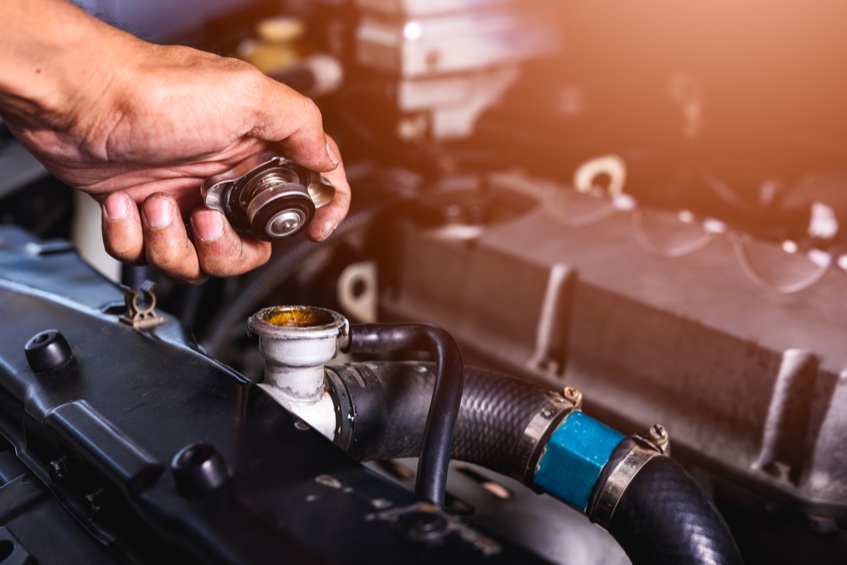
Finding Out About a Radiator Flush
Automobiles are handy to have, they get us from Point A to Point B, and further. But they also require maintenance, like having the tires rotated, the oil changed, and the radiator flushed. And while tire rotation and oil change are self-explanatory, you may wonder what is a radiator flush.
Is a radiator flush necessary?
A radiator flush, which is also referred to as a coolant flush, is a procedure that cleans the cooling system, removing any contaminants like rust and sediment. When a radiator gets too much rust or sediment, it keeps it from flowing which can cause the engine to overheat. It is a level of protection for your engine and all the metal components attached.
A radiator flush removes the prior products that have been added to the radiator, which is needed because they begin to deteriorate after some time. When the coolant has deteriorated, the engine can easily freeze or overheat.
What is included in a radiator flush?
A radiator flush will consist of the following steps:
- Drain the existing coolant from the radiator.
- Add new coolant with a mixture of conditioner if the vehicle specifications recommend it.
- Then the vehicle is started and allowed to run for a period. This allows a new mixture to circulate through the cooling system to clean and loosen any rust, sediment, and other possible contaminants from the radiator channel.
- The radiator is drained again to rid the contaminants, rust, and sediment that were loosened.
- The radiator is refilled with a new coolant mixture, typically a 50/50 ration of anti-freeze and water.

How often should I do a radiator flush?
Your owner’s manual will have a recommendation of a basic maintenance schedule, including a radiator flush. If you don’t have the owner’s manual, the typical radiator flush schedule is between 30,000 and 50,000 miles, or every two to five years unless there are issues with the cooling system or engine that may require a radiator flush sooner.
When do you need a radiator flush?
There are two main issues that indicate your car needs a radiator flush:
- On an exceptionally cold or hot day, if your car doesn’t start, check the radiator overflow reservoir. If the level in the overflow reservoir fluctuates, that is an indication the engine isn’t circulating the coolant as it should. Have a radiator flush done immediately.
- Another indication is when you notice a sweet-like smell coming from the engine. This is antifreeze spilling over and allowing the car to overheat. Add some coolant and if it needs again after you’ve driven the car, have a radiator flush service done.
What happens if you don’t flush radiator?
If you’re thinking a radiator flush isn’t that important, or you just want to roll the dice and see what happens, let’s tell you about the possibilities.
If you are already having issues like a sweet-like odor coming from under the hood, or your car is overheating, those are things that will continue – until they can’t because the engine froze up. And then you’re faced with expensive repairs or a new engine.
So, let’s pretend you didn’t get the recommended radiator flush and your car dies, and won’t start. What happened?
The corrosion, rust, sediment, and other contaminants that naturally occur in an engine kept building up. Eventually, the gaskets inside the engine were damaged, allowing water and coolant to leak, which lead to the engine overheating.
What are the benefits of flushing the radiator, do radiator flushes work?
A radiator flush will give your car several advantages and the four biggest benefits are:
- Contaminants and Scale Remove
The more you drive your car, the more it wears out, and this allows contaminants into the cooling system. That in turn, causes corrosion and rust, and then the cooling system can’t flow like it needs to, and the engine overheats.
- Water Pump Lubricated
The coolant that is added to a radiator, you may know as antifreeze, isn’t just colored water with a scent added. It is a lubricant for the water pump. When this lubricant deteriorates, the water pump can’t pump water through the cooling system, then the engine overheats.
- Rust Protection
The additives in the antifreeze also coat the radiator and inside oft engine to prevent it from rusting.
- Cooling System Inspection
With a professional radiator flush, the technician can provide a comprehensive inspection of the cooling system. This includes pressure checking the entire system for any water leaks.
At The Finish Line: Is radiator flush harmful?
To a non-mechanic person, a radiator flush can sound hard on an engine, but is it? When done correctly, no, a radiator flush will not harm the engine or cause any problems. It is flushing everything out of the cooling system that could harm the engine!
German Performance provides assistance with a radiator flush in Atascadero, CA. Call 805-466-3236 to learn more.
